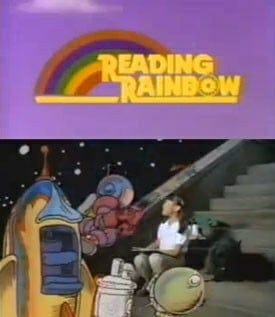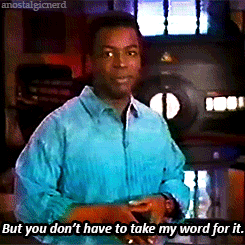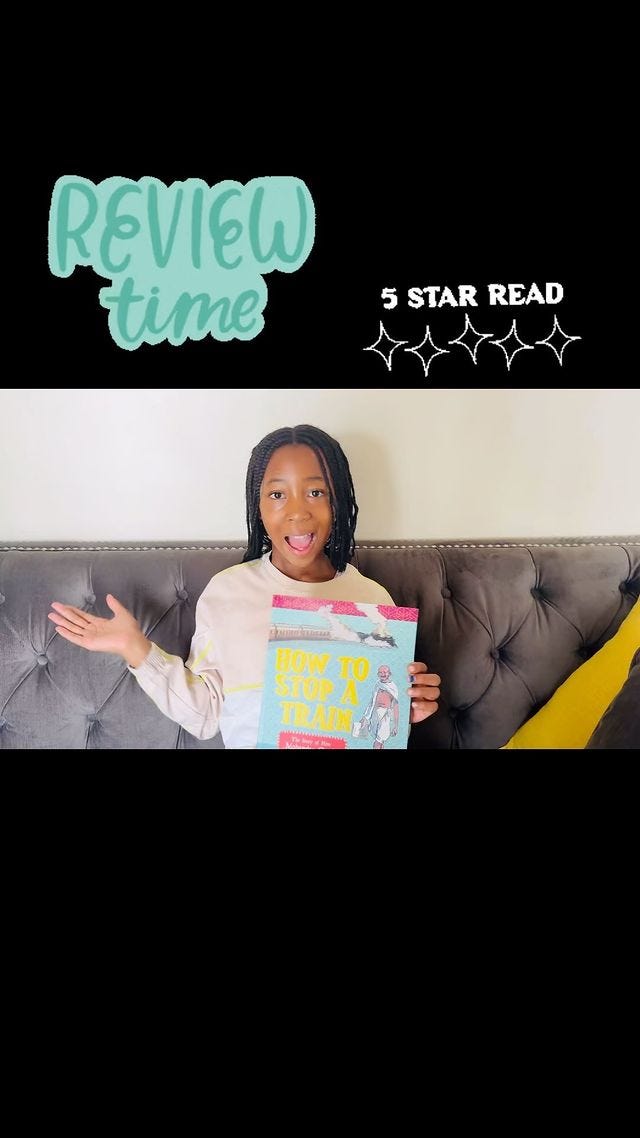Reading Rainbow and Wonder
How an early 90's kids show shaped my views on beauty and literature
Hello friend! In this newsletter, I write about making more space for beauty and justice to meet. It mostly ends up being essays about children’s literature, living seasonally and liturgically in the Southern Hemisphere, the history of mother-writers/creatives, and Little Women because Little Women has an answer for every life problem. When you become a paid subscriber, you help make this newsletter possible! And you support my other writing habit, which is writing children’s books. Thank you! You can read the essay for free, click the three little dots below if the essay is not automatically showing up!
I’ve been thinking a lot about Reading Rainbow lately. If you are unaware of this 1980’s/90’s USA children’s show about books, let me send you to Youtube RIGHT NOW.
The concept of this show is brilliant (see this footnote for how it works1). Every episode ends with the host, Levar Burton, telling the viewers that there are even more great books on that episode’s topic, “But, you don’t have to take my word for it!” Early 1990’s graphics sweep across the screen to a synth beat and then viewers get to experience three real children giving book reviews of other books about that episode’s theme.
I have been thinking about Reading Rainbow a lot lately, mostly because I wrote a children’s book and have been getting reviews from moms on social media, which is great… but realizing that deep down, all I want is for a kid to review my book Reading Rainbow style. (Actually, one did, and it was ALL MY DREAMS COME TRUE).
We pulled out the old Reading Rainbow episodes this school holiday so that I could get a break from the kids, but I actually found myself getting sucked into watching the episodes, too. It’s always funny seeing something from your childhood and wondering if it’s still as great now as it is in your memory. Reader: it is2.
I’m in this super reflective “Why did you want to write children’s books?” phase, since that’s something that I’ve been asked as I talk at schools about our picture book. I’ve mentioned my mom (yay moms!) but I actually think I owe a lot to Reading Rainbow — and not just for planting ideas in my brain of being a TV-famous author with a book review.
Watching these episodes, I was amazed at the emphasis of the show. The language the host uses is complex and descriptive, almost poetry3. For a TV show that you’re just watching, the show is surprisingly sensory. The host is always talking about the way things feel, or smell, or what they sound like. The books chosen and the people interviewed are a diverse cast of Americans in all seasons of life (one of the cutest ones was meeting a group of retired ladies who are dancers, talking about how you’re never too old to learn anything4). But the main thing that lept out to me was that the premise of this show is wonder.
In almost every show, whoever he meets, whatever they are doing, whether it is Russian egg painters, or Native American potters, or scientists teaching him what human blood looks like under a microscope, or the strange silence of the desert, or the resilience of formerly enslaved Americans, Levar has just one response:
Wow.
Literally, he says “wow” on every episode. And not “wow” in a hyped-up, thumbs-up, wink at the camera, TV-catch-phrase way. The “wow” is almost always after a pause. It’s almost a whisper.
Wow.
I have a sense that today, a TV fieldtrip to a science lab would involve lots of “STEMmy” kind of lingo5. Talk about the scientific process maybe. Discussions of things being broken down into logical steps. Instead, LeVar looks at a slide of his own blood and says something like,
“Wow. (pause). That’s kind of beautiful. It looks like they’re dancing. That’s really in my body?”
We meet mechanics who talk about the pride they get out of fixing something broken, as well as the joy of feeling slippery oil on their fingers. We get female hockey players talking about breaking stereotypes, and scientists talking about the connection they feel to the earth when they are standing out in the desert. We hear a lot about beauty - in people, in places, in art, in cultures, in nature.
It’s a show about reading, but no one is teaching letters, or sounds. Instead, we’re seeing how a good book can help connect us to the whole world. We’re seeing that stories can help us make sense of things when life is confusing. We’re learning that stars and blood vessels and dinosaur bones and saguaro cactuses are not just there to be picked apart and analyzed, but to be beheld. To be enjoyed. That stories can help us highlight the beauty and meaning of the world.
When I think about education and its purpose, I often think about Richard Louv’s The Last Child in the Woods, which is about the importance of environmental education in the work of combating climate change. (I mean, it’s literally a book about education and saving the world). But he says giving children first-hand experiences in nature is by far the best environmental education because, “You can’t protect what you don’t love.”
Reading Rainbow has the same premise. Phonics don’t matter if you don’t want to read. Books matter not because they are full of words that you need to learn to sound out. Books matter because the world is a mysterious and confusing and delightful place, and a good story can help a child give meaning to it all.
But, you don’t have to take my word for it.
Just Beautiful Links
As a way to say thanks to those who are paid subscribers, I include links to what I’m reading with the kids, reading myself, listening to, or watching… or any place on the internet where I spotted something related to justice and beauty.
Keep reading with a 7-day free trial
Subscribe to Just Beautiful to keep reading this post and get 7 days of free access to the full post archives.







